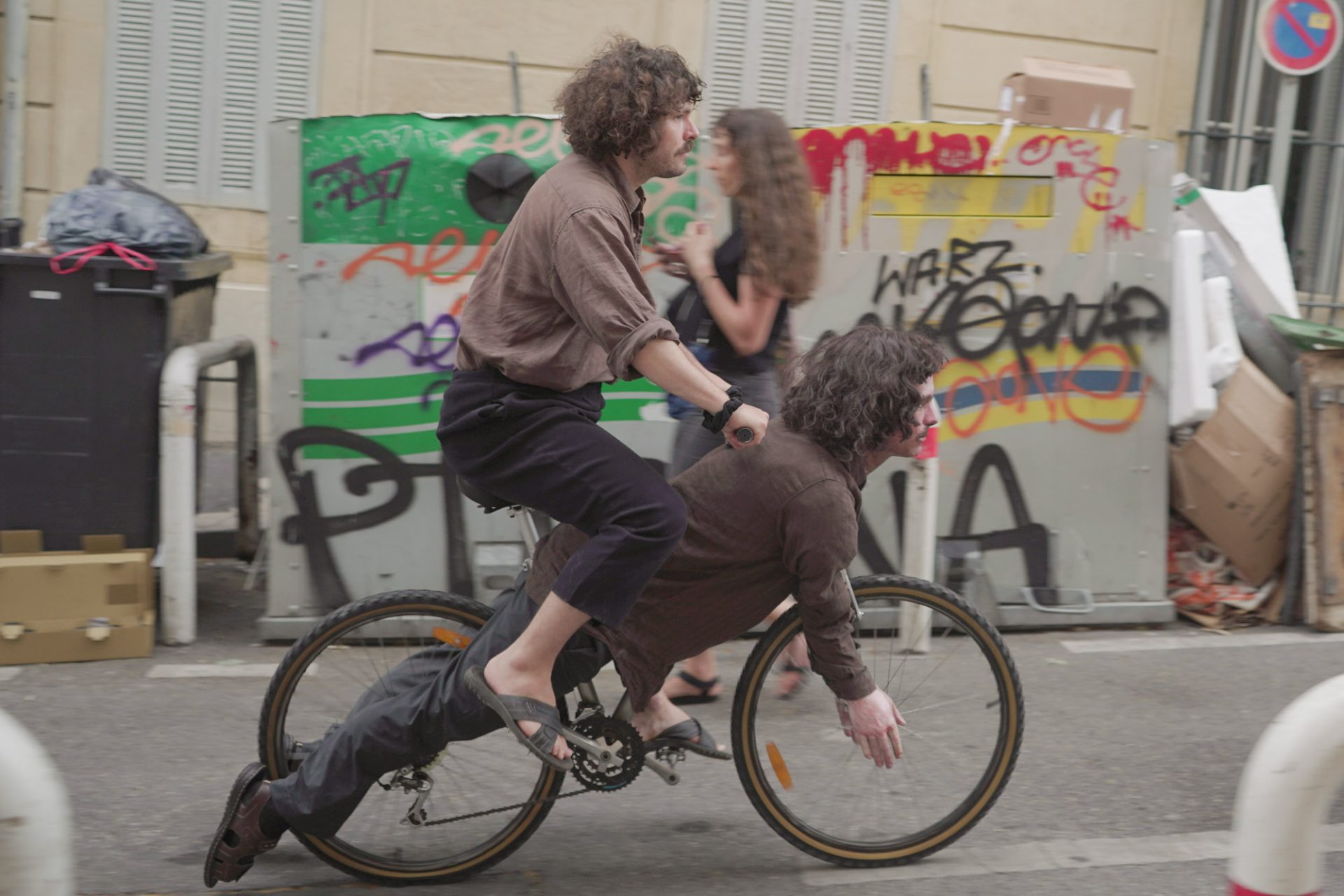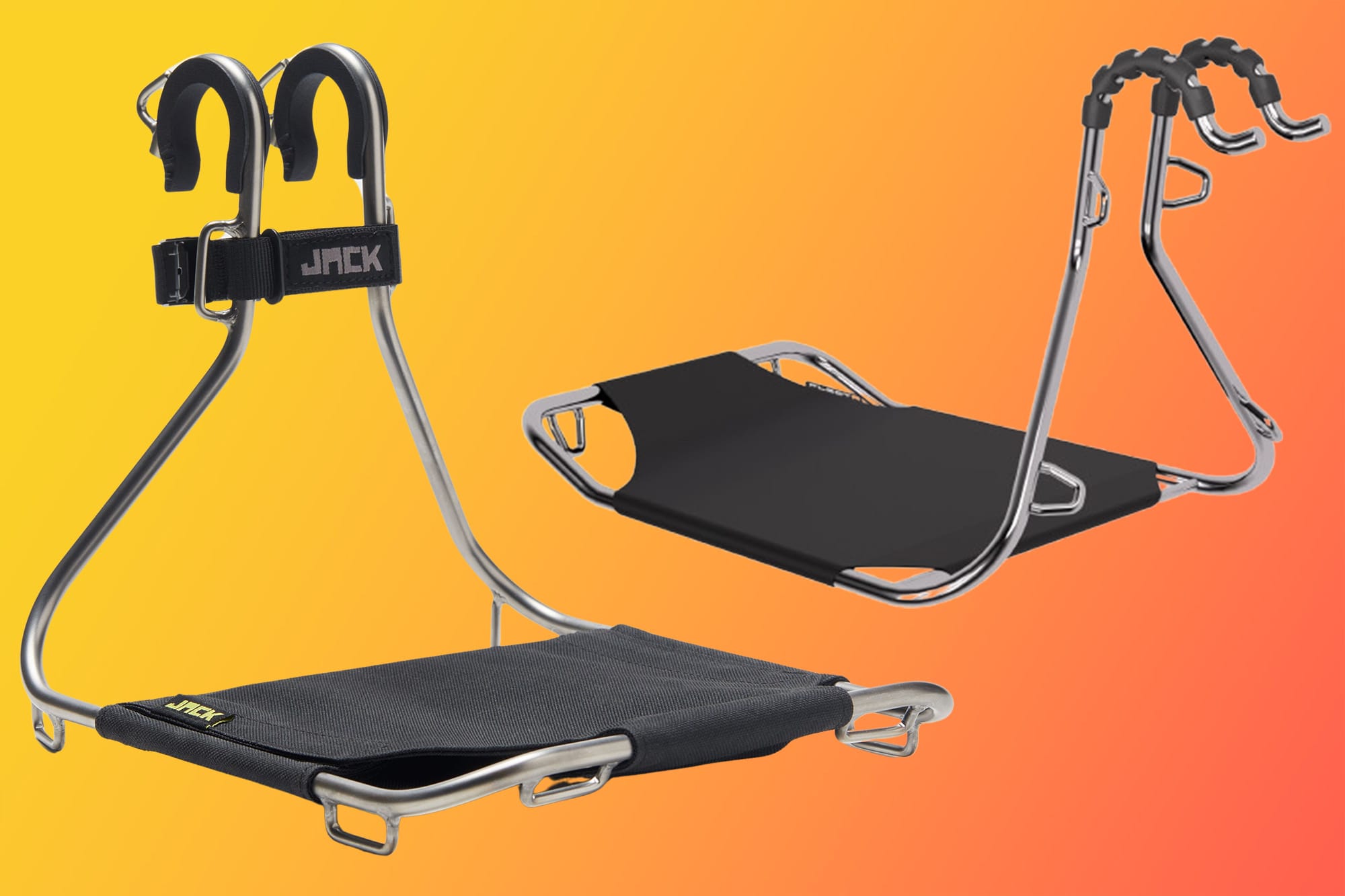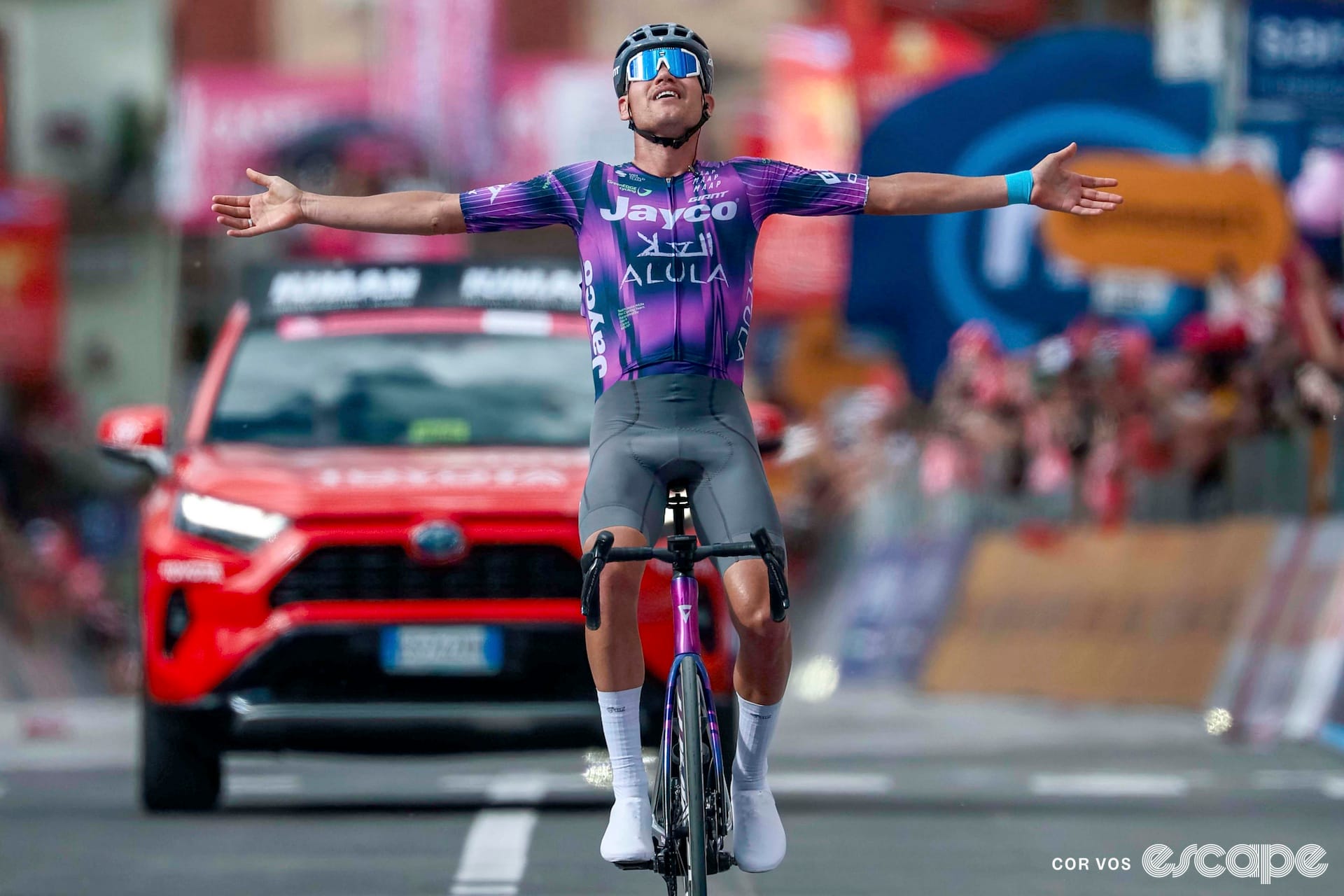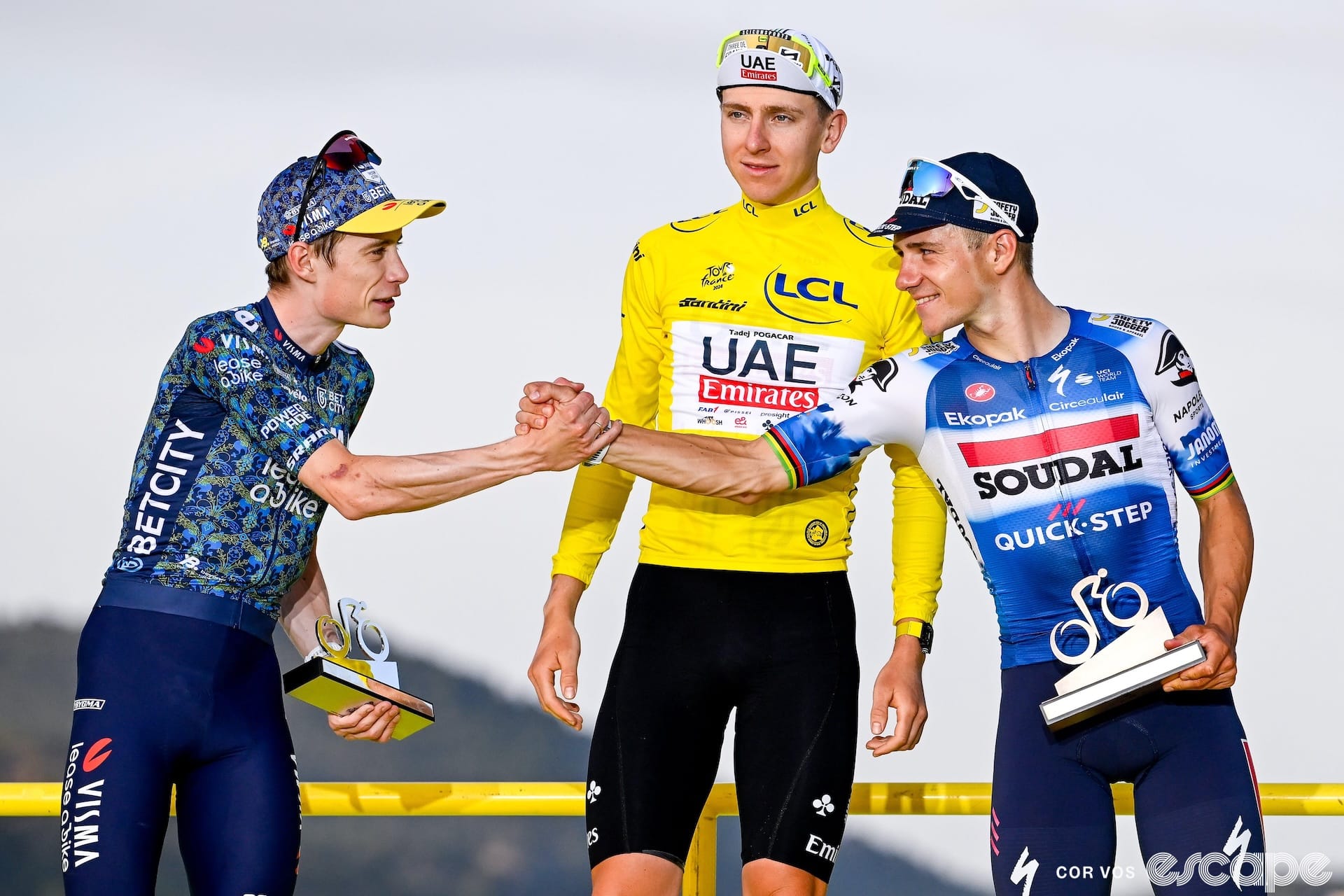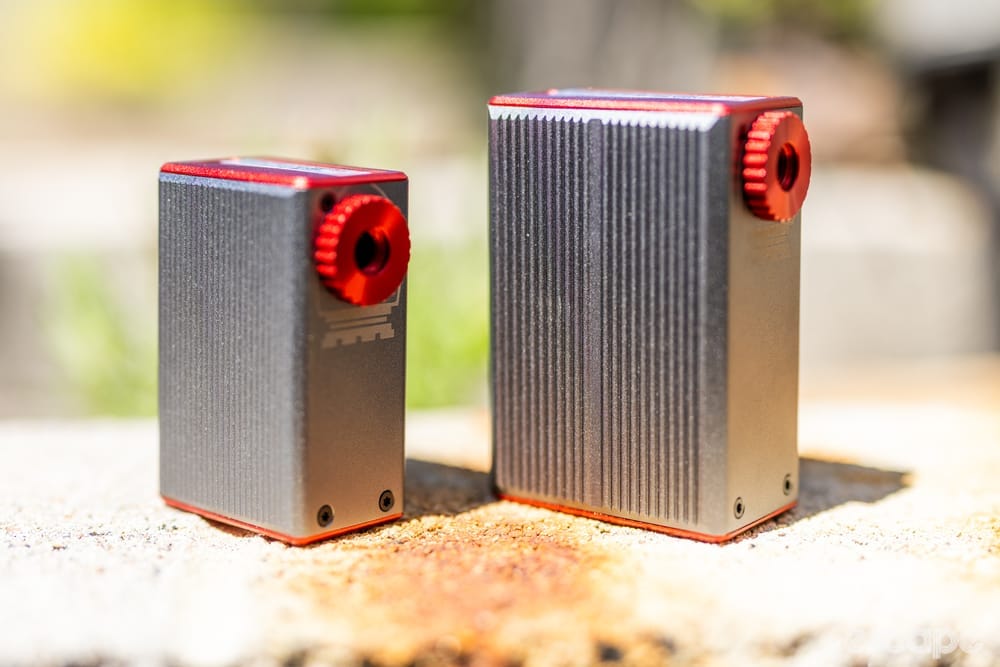Browsing online the other day, I came across an image that stopped me in my tracks. A curly-headed, moustachioed man in brown, riding a bicycle unlike any bicycle I'd ever seen before – because that bicycle was also a remarkably life-like curly-headed, moustachioed man in brown.
In my response, and in those of the onlookers in the pictures, were a mix of reactions: amusement, confusion, a light sprinkling of body-horror. But something stuck with me from the pictures, and curiosity eventually took over as the dominant response. I wanted to know the story behind this sculpture of a man, being ridden by the same man – to understand whether this was artwork, or a prank, or some kind of broader statement. So I slid into the DMs of its creator, the Marseille-based artist Jeremy Barzic, to tee up some time for a chat.
A few days later, a sleepy-eyed, tousle-haired Barzic spoke to me from his studio. Lightly edited for length and clarity, this is the Frenchman's view on his visually arresting public artwork, his love of cycling, and his future ambitions to combine the two.
Iain Treloar: It’s the middle of your day – run me through what a day in the life of Jeremy Barzic looks like.
Jeremy Barzic: Mmm … I wake up with difficulty [laughs] then I mostly hang out in my shop – my studio – and work on some stupid projects.
So you are a full-time artist? Is this how you would describe yourself, as an artist, or a sculptor …?
I do … stuff. I mostly do filmmaking, mostly some documentary. Usually, my sculpture is a part of some documentary or movie - a part of it. For example, the bicycle was initially something that I wanted to do for a long time, but it was an excuse to do it now because it was part of a screenplay that I was working on.
So it’s a kind of prop in film projects rather than a standalone piece of art.
It is the two – it’s both. I’m kinda obsessed with bicycles in general.
That leads very nicely to my next question. What’s your relationship with cycling?
It’s … I don’t walk anymore. I’m like a human with wheels. Even the idea of walking is making me feel a bit sick. [laughs] That's it. I don't know. It made my life better.
Have you been riding bikes for a long time? Or is this a relatively recent discovery that it makes your life better?
No, I think it's like most people. Like drawing – almost every child used to draw, and at a certain point, when you become an adult, you stop doing it, except for some artists that continue. The bicycle was kind of the same for me – I was riding as a child all the time, until a certain point – I moved to the city for my studies and it disappeared from my life. Then, seven years ago or something, I rediscovered it.
I was kind of broke at the time and the Tour de France was passing in my city – in Bretagne, Brest – and there were a lot of bicycles along the road, for the transit of the Tour de France. Just broken bicycles with a lot of missing parts that they spray-painted in red, white, blue. So after the Tour de France was done in my city, I went to pick up the broken bicycles that had stayed on the side of the road, and I began to assemble them to make one bicycle that worked from all the bicycles that were missing parts. And that’s how it began again – my passion with bicycles.
So, you're originally from Brittany and now you're in Marseille – those are very opposite ends of the country. Did you move down there for studies?
Yes, for my degree in fine art.
I first came across your work because of this bicycle sculpture of you riding a version of yourself, and I thought it was a very arresting visual – so I was curious to understand not just the process behind it, but also the meaning behind it. Whether it’s a comment on the vulnerability of cyclists, or an attempt to slow people down around bikes, or to change the relationship that people might have with riders.
Yes, of course – of course. I have a close friend of mine that had been in an accident, had been hit by a bus. Marseille is the worst-rated city for bicycles in France. It’s a huge mess, a huge car culture. In some ways it’s kind of fun because there is a lot of adrenaline, a lot of sensations when you're riding [here], but it's also very dangerous. This of course was one of the goals of this project, to make it visible.
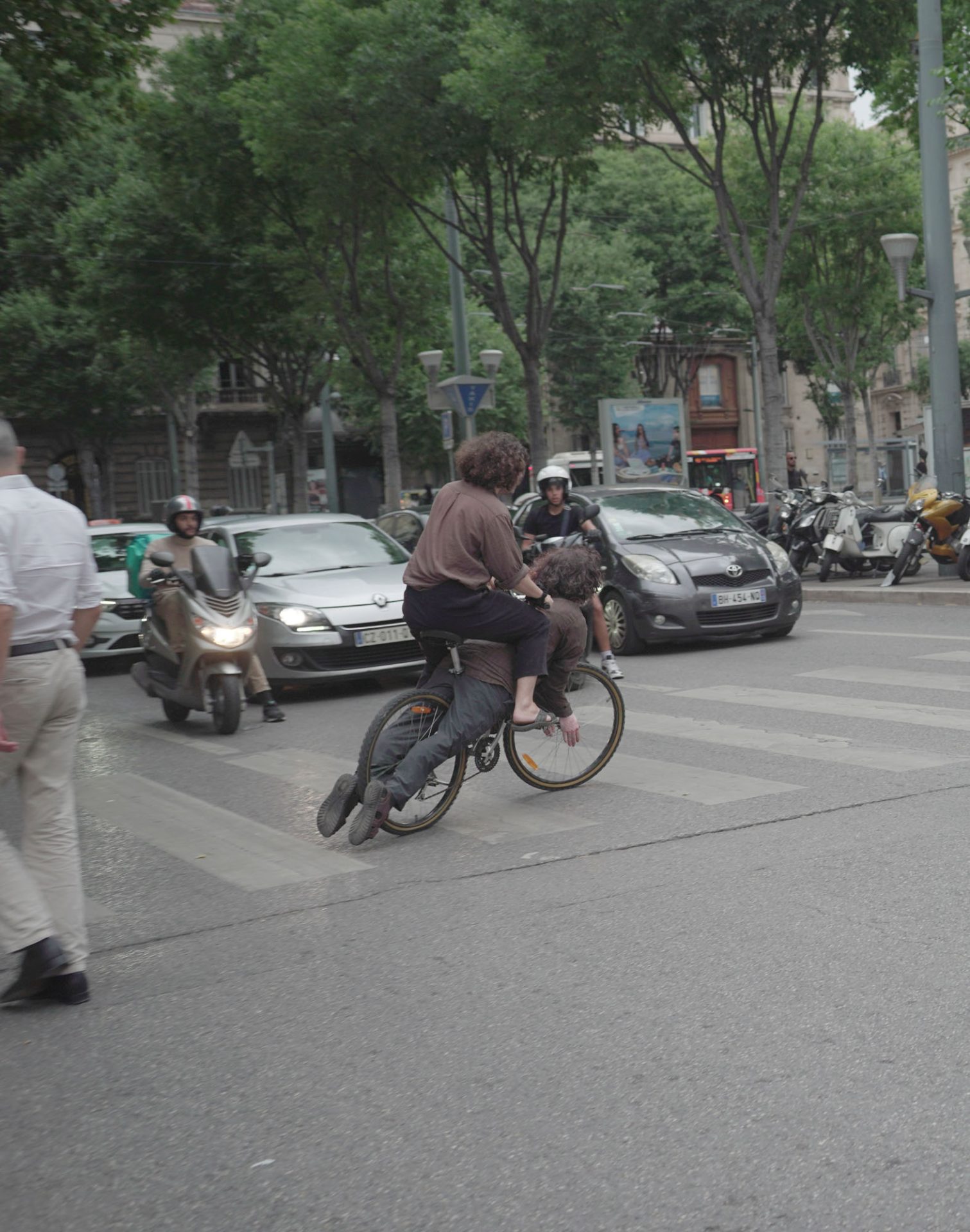
This work is quite surreal and in some ways, it's almost a little bit grotesque … I don't think that anyone can view it and not have some kind of reaction to it. It provokes a response.
That was the goal. And to put light on this magnificent, pure piece of engineering that is the bicycle. It’s like the perfect complimentary piece of machinery for the human body.
I don’t know if you know a little bit about architecture, but there’s a French architect called Le Corbusier that had this theory of constructing a building in the scale of the human body – the bicycle is a bit like that, the human-powered machine that is the most efficient.
Can you explain to me the process of creating this work of art? What bike did you start with, to begin with, what’s underneath the body?
It’s part of a mountain bike that I modified and welded, to make it kind of disappear under the structure.
So there's a metal frame inside the the body?
Yes, and the sculpture is made from polystyrene to make it light.
How much extra weight does it add to the bike, the additions that you have made?
Not much. I think it’s something like three kilos – without clothes. Naked.

Is it very lifelike under the clothes? Have you gone to that level of detail?
[laughs] The realistic parts are only the visible parts because I'm kind of lazy. The form is correct, but there is no skin effect.
The face seems to be quite a good likeness. Were you just staring in a mirror for a long period, or did you look at a picture, or base it off a picture of yourself?
My technique is a little bit different. This is a mixture of painting, but also I do a 3D scan of my face and then I print it flat and do a papier-mâché and stick it back onto the structure. It's a 360º picture that I cut and then put on.
Have you exhibited this piece anywhere or is it just for in the film?
I did a collective exhibition at this very place – my studio, with other people in the collective. I don’t know if this is as much a piece you exhibit, though. The point of this piece, and what I like about it, is that it’s not contained in a museum or gallery.
It's a piece, a sculpture, that can go out to the public on the street that might not be used to being exposed to galleries or are not of the same socio-cultural background. And that's exciting. When I went on the street to test it, everyone in the street reacted – it was kind of scary and beautiful at the same time. I think I will make more sculptures on bicycles in the future; I think for me it’s more interesting than to just put it in a gallery.
So it’s kind of a living, public artwork. I like that. You mentioned that everybody was reacting to it and responding to it when you were riding it on that test ride: what kind of reactions? What were people doing?
A lot of people wanted to talk to me about what the hell was this thing. There was like, yes, a little bit like what you said earlier – some people were uncomfortable. Some people who were laughing. Some people who were extra-curious about what this thing was and wanted some answers.
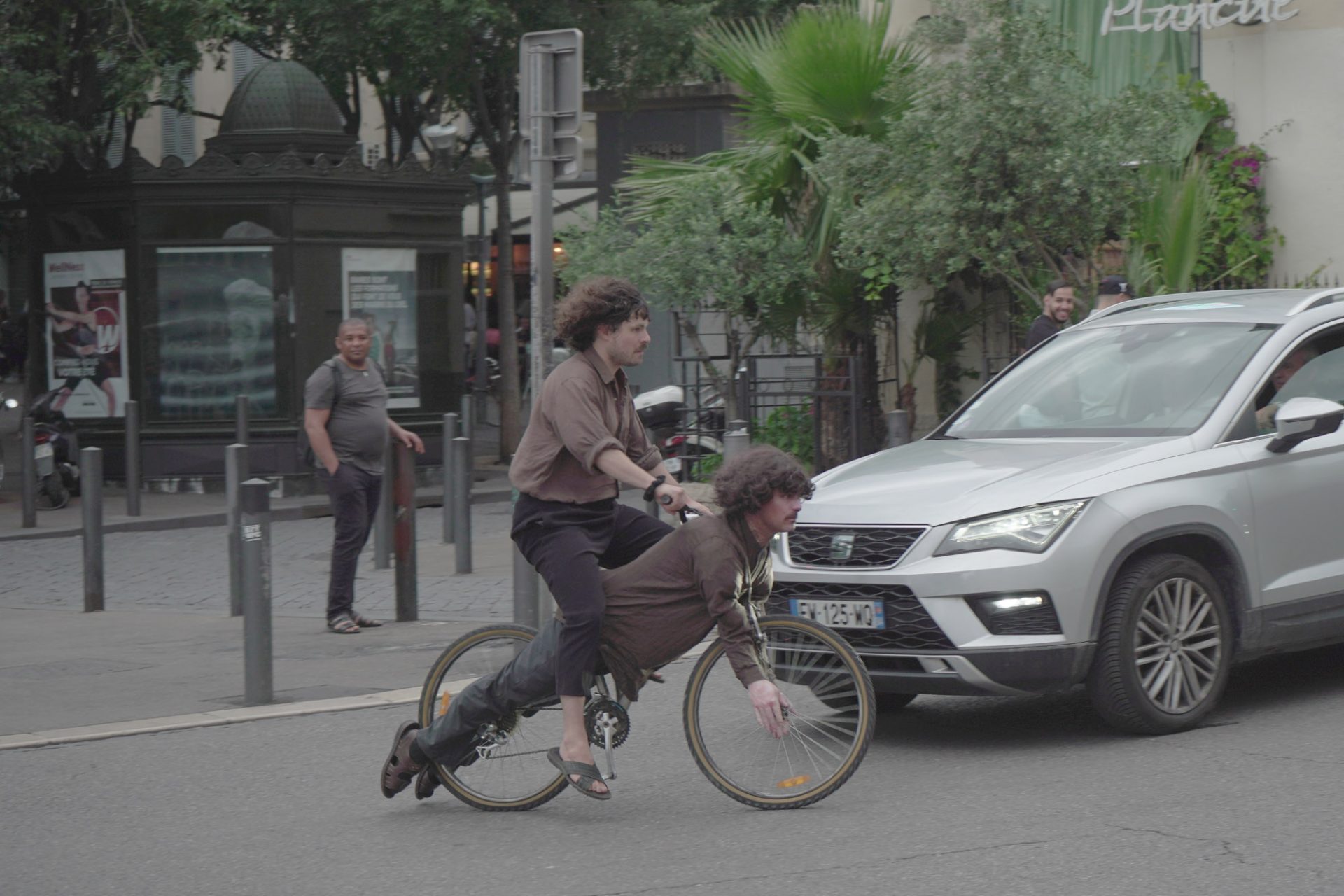
Does it change the riding experience of the bike, or does it just ride like a normal bike? Can you forget you’re riding a sculpture of yourself …?
I have the impression that I’m on a horse. The whole body – I feel that around my leg, like if I was on an animal. I made a pedal extension because otherwise I can’t reach the pedal under the body. So my legs are kind of like a duck [mimes knees going out with hands].
Do you use it often? How recent is this project?
I finished it about two months ago, one month ago. I ride the human bicycle when I'm feeling a lot of social energy because otherwise it's exhausting – if I want to be discreet and just go on my way without talking to people it’s not a good idea to take it. Otherwise, I’ve taken it outside from time to time.
Does riding a normal bike feel different after riding a bike so strange?
Yes, but I have made a lot of bikes along the years. I tend to change often, because otherwise I’m numb about the bike and I don’t feel them anymore. So I have the tendency to change the bicycle so I can rediscover its sensibility.

So what is your current bike? Do you have a particular bond with your current bike (or bikes)?
Yes, I have a bond with all my bikes. I’m polyamorous with all my bicycles. [laughs] My current bike is a road bike, a Lapierre, metal frame – a friend of mine was leaving the city so he let me have it. It’s my first road bike – it’s the first bike that is not trash, a Frankenstein bike made from all kind of bikes into one. I have a special kind of love for it ... when I rode it for the first time I said ‘ah yes, a bike can be this fast and nimble. This is a real bike.’
There’s also a beauty in those bikes created out of the Frankenstein bicycles, though – a different kind of beauty.
Yes, yes.
You mentioned that you want to do a few bicycle related projects in the future. What might that look like?
I have a lot of ideas. I don't have a clear separation between the engineering stuff and artistic stuff, but there are a few projects on both sides of this spectrum. I wanted to make a cargo bicycle project, for example, and in more artistic stuff – it’s already been done, but I wanted to do it for fun – a musical bicycle. Like a one-man band but for a bicycle. The handlebar will be a synthesizer, and the rear wheel would be the drum machine; the BPM will change in function of your speed, and there will be some wind instruments … the maximum of instruments that will be functioning with the rotary of a bicycle. The bicycle plays the song, not me – automated with the mechanism of the bicycle.
But with this bicycle sculpture ... it was very fun. I wasn't imagining this kind of response.
Did we do a good job with this story?

